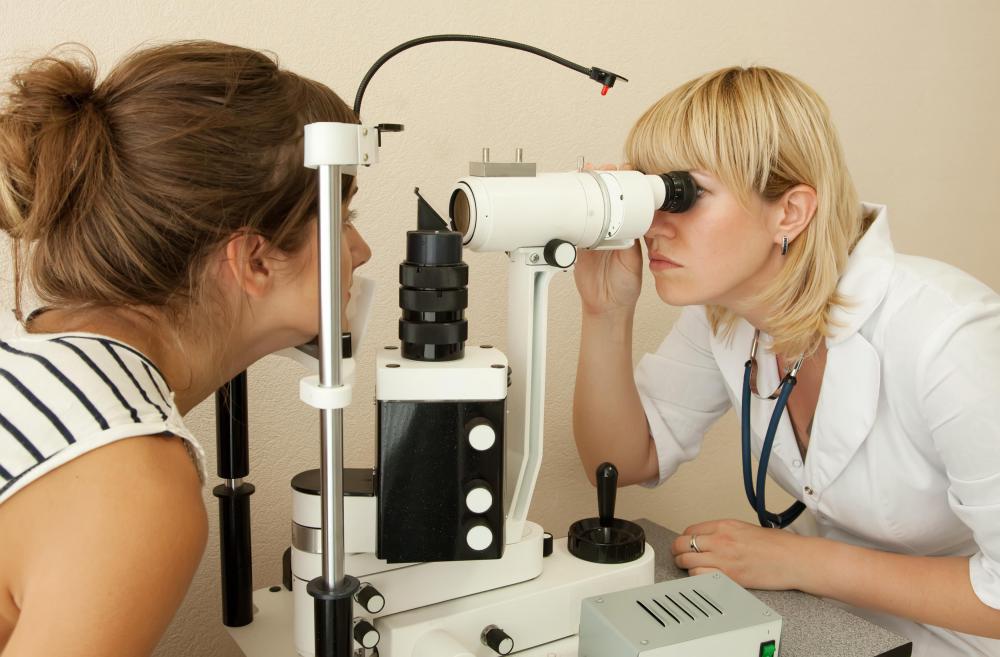At TheHealthBoard, we're committed to delivering accurate, trustworthy information. Our expert-authored content is rigorously fact-checked and sourced from credible authorities. Discover how we uphold the highest standards in providing you with reliable knowledge.
What Is a Retinal Transplant?
A light-sensitive tissue located in the inner surface of the eye, the retina is crucial to sharp central vision. A number of disorders — some degenerative — can affect the retinas. In cases where visual acuity has been severely damaged and no other therapeutic interventions are available, a retinal transplant may be attempted in an effort to improve vision.
In order to achieve visual perception, images seen by the eyes’ lenses are focused on the retinas, which then convert the pictures into electrical impulses and transmit them to the brain through the optic nerve. Healthy retinal tissue is typically red due to an abundance of blood vessels that supply it with nutrients. An ophthalmologist can easily examine the retina during a routine eye test. Changes in retinal tissue color may be indicative of disease. A number of diseases can damage the retina, including retinitis pigmentosa and macular degeneration.

The transplantation of retinal tissue is an experimental procedure, used only when all other treatment options have been exhausted, and in cases where there is extensive tissue damage and complete vision loss. Two types of transplant options exist, whole retina and stem cell transplants. Stem cell transplants have proven unsuccessful, as the cells seem to fail to differentiate into retinal cells, a process needed for visual improvement. Clinical trials involving the transplantation of a small piece of whole retinal tissue have proven moderately successful, with a large percentage of patients experiencing a degree of visual acuity improvement. It is thought that transplanted cells may eventually replace the patient’s damaged cells.

A number of concerns exist regarding retinal transplants, as the tissue used in the clinical trials usually comes from aborted fetuses. Approval to replicate the technique on a larger scale, using fetal tissue may pose an ethical issue. Medical studies indicate that transplanted retinas may release growth factors into the recipient’s eyes and this may help their own retinal cells recover from damage. It is therefore unclear whether whole retinal tissue transplants are necessary for visual improvement. Improvements in visual acuity are typically reversed one to two years post-retinal transplant, although in isolated cases they have lasted up to six years following treatment.

No immunosuppressant medications seem to be required after a retinal transplant, and, according to medical studies, there have been no cases of rejection of transplanted tissue. The procedure is experimental. More research is needed to determine the retinal transplant method that is safest and that offers the best sustainable visual acuity improvement.
AS FEATURED ON:
AS FEATURED ON:


















Discussion Comments
The assertion that tissue in trials comes from aborted fetuses is not very accurate as one very prominent clinical trial extracts single cells from embryos which does not cause any damage and it can continue on its normal pattern of development.
I suggest whoever wrote this article should do their research a little better before stating such a biased message appearing to align with so called "pro-lifers" and creating a negative image of science. Disappointing.
Post your comments